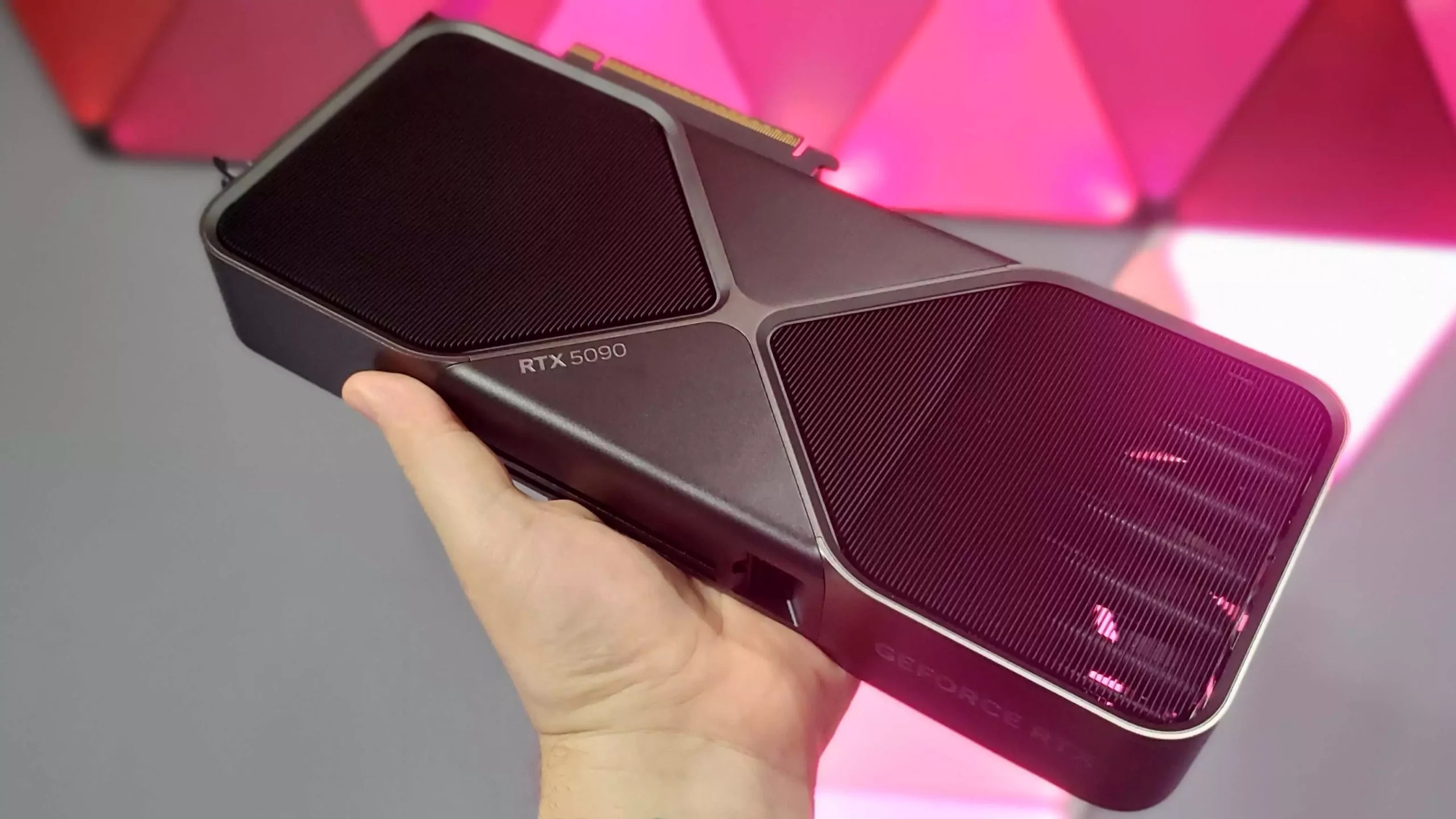In an encouraging sign for gamers and tech enthusiasts alike, the Nvidia RTX 5090 has recently become available at or below its Manufacturer’s Suggested Retail Price (MSRP) in certain regions, less than six months after its initial launch on January 30. Historically, the GPU market has endured severe pricing issues driven by overwhelming demand, supply chain disruptions, and speculative purchases in the wake of trends such as cryptocurrency mining. However, the gradual return to MSRP is not merely a numbers game; it signals a potential seismic shift in consumer experience and market dynamics.
UK consumers can rejoice, as retailers like Overclockers UK are offering the Palit GeForce RTX 5090 for £1,879.99, slightly beneath the UK MSRP of £1,889. While this price difference might seem marginal, it represents a significant departure from the rampant price inflation that has dominated the GPU landscape for years. Despite this improvement, American consumers still face considerable price hurdles. For example, Newegg lists the RTX 5090 starting at a staggering $2,919.99—a far cry from its stated MSRP of $1,999. So, what factors are influencing these discrepancies across various regions?
The Regional Pricing Puzzle
The issue of price normalization isn’t merely a reflection of supply and demand; it extends into the intricacies of regional economic conditions and competitive landscapes. In the US, high demand prior to the imposition of tariffs likely led to speculative buying, exacerbating shortages and driving prices even higher. With many US consumers adopting a “buy now or miss out” mentality, competition in the market inadvertently encouraged retailers to inflate prices beyond reasonable limits, maintaining a status quo that discouraged affordability.
Contrast this with Europe, where the pricing on the RTX 5090 appears to trend more favorably. In Finland, for example, current listings hover around 2,399 Euros, which is close to the MSRP of 2,339 Euros. Even in this scenario, somewhat ambiguous pricing still hints at lingering issues. However, the essential takeaway is that, across various territories, a healthy supply is emerging, creating opportunities for purchasing graphics cards at or near MSRP—something many consumers have long since given up on.
A Step Forward, but Not Without Challenges
Though the overall arrow appears to be pointing in a positive direction, challenges persist. For instance, while most of Nvidia’s RTX 50 lineup can now be purchased below suggested prices in the UK, AMD’s Radeon RX 9070 XT remains stubbornly positioned above its own £560 MSRP. These price hikes serve as a reminder that not all manufacturers have resolved their pricing dilemmas, suggesting a fragmented market landscape where some brands still struggle to meet demand at reasonable prices.
Moreover, any sharp recovery or normalization in pricing faces significant risks linked to external factors, chiefly tariffs and supply chain complexities. The unpredictable nature of U.S. trade policies under the previous administration has left many consumers uncertain about future pricing trajectories. If tariffs eventually return to what could be considered “normal,” it stands to reason that pricing could align more with MSRPs across the board. However, as history has shown, “normal” can be a fluid concept in the tech industry.
The Path Ahead for Consumers and Retailers
So, what does this mean for the future of the GPU market? If the data is any indication, we are slowly but surely moving past the extreme highs of price gouging and erratic stock levels. As manufacturing ramps up and gamers and creators alike find their footing in a new era of availability, more equitable pricing structures may take root.
At the end of the day, the broader implications for consumers are quite promising. A healthy, competitively priced GPU landscape has the potential to empower users by offering them more options and encouraging innovation within the market. Ultimately, if retailers can strike a balance between demand and supply without succumbing to the pitfalls of previous price inflation, we may very well be on the cusp of a more accessible and enjoyable gaming experience for everyone.


Leave a Reply